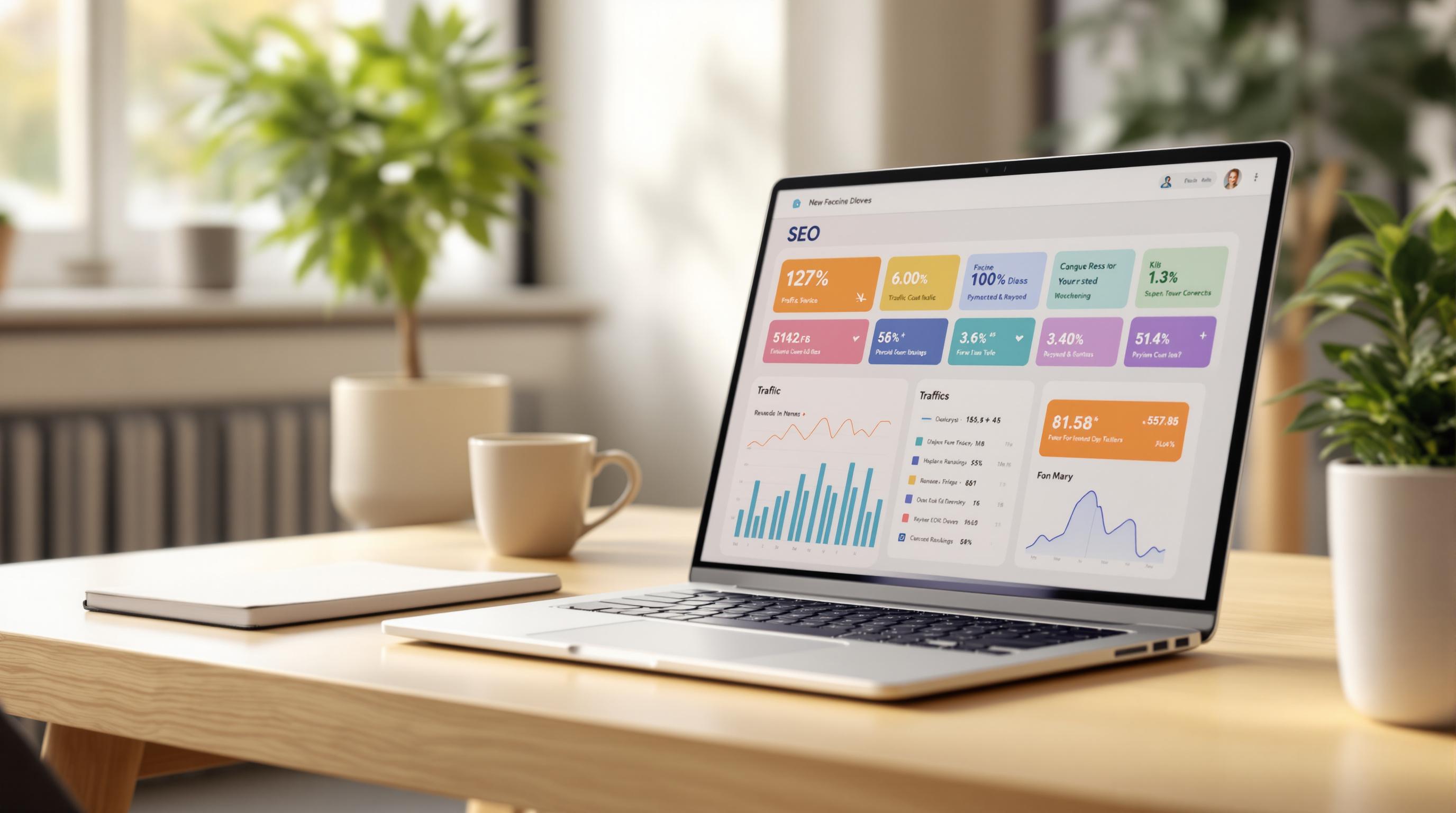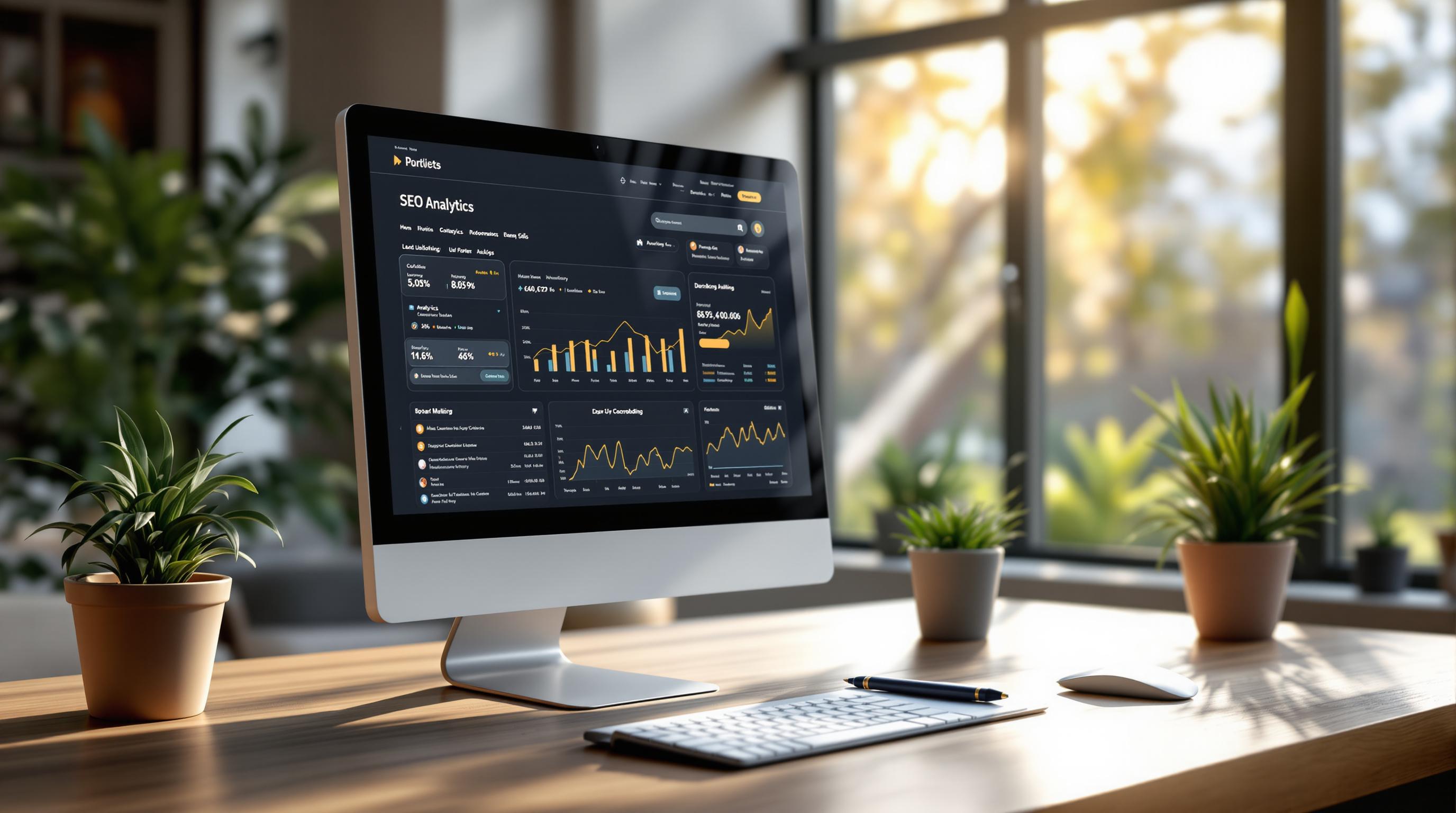Lazy loading speeds up websites by loading only visible content first and deferring non-essential elements, like images or videos, until needed. This improves user experience, reduces bandwidth usage, and enhances SEO by boosting metrics like Largest Contentful Paint (LCP). Here's what you need to know:
-
Key Benefits:
- Faster initial page load.
- Better mobile performance.
- Improved search engine crawling efficiency.
-
How It Works:
- Loads above-the-fold content first.
- Defers media below the fold until users scroll.
- Uses placeholders to maintain layout stability.
-
SEO Advantages:
- Boosts Core Web Vitals scores.
- Aligns with mobile-first indexing.
- Ensures efficient use of crawl budgets.
Lazy loading is ideal for media-heavy content like images, videos, and product galleries, but must be implemented carefully to avoid issues like blocked indexing or delayed critical content. Use tools like loading="lazy" or the IntersectionObserver API for effective implementation.
SEO Advantages of Lazy Loading
Faster Page Loading
Lazy loading speeds up the initial load time by prioritizing above-the-fold content. Instead of loading everything at once, it focuses on delivering the most important elements first, which makes the page interactive faster. This approach directly improves Core Web Vitals, particularly Largest Contentful Paint (LCP) - a major factor in Google's ranking system.
Here's a quick breakdown of how resource loading impacts SEO:
| Loading Phase | Resources Loaded | SEO Impact |
|---|---|---|
| Initial Load | Key content and visible elements | Better LCP scores |
| Scroll-triggered | Media and content below the fold | Lower bandwidth usage |
| On-demand | Interactive features and additional assets | Improved crawl efficiency |
Better User Experience
Lazy loading ensures that primary content is available immediately, while secondary elements load gradually. This is especially useful for mobile users with limited data or slower connections, aligning perfectly with Google's mobile-first indexing approach.
With proper implementation, users can engage with the main content right away, while other elements load in the background as they scroll or interact with the page.
Improved Search Engine Crawling
Search engine crawlers also benefit from lazy loading. By prioritizing critical content, crawlers can process and index your most important elements more efficiently. This approach helps search engines understand your content structure and use their crawl budget effectively.
Key points to keep in mind for better crawling:
- Correct Implementation: Use proper HTML markup to ensure all content is crawlable.
- Content Prioritization: Make critical content immediately accessible to search engines.
- Technical Setup: Incorporate semantic HTML and structured data to clarify content relationships for crawlers.
While lazy loading offers performance improvements, it must be implemented carefully to retain SEO benefits. Search engines need access to all content, even if it's lazy-loaded. Using standard techniques, like the native loading="lazy" attribute for images, ensures compatibility with crawlers while maintaining performance gains.
Up next, we'll dive into the steps for implementing lazy loading to maximize its SEO benefits.
Setting Up Lazy Loading for SEO
Implementation Guidelines
When setting up lazy loading, prioritize both speed and SEO. Make sure key elements like navigation, headers, and main content load immediately since they are essential for user engagement.
For images, the simplest approach is to use the native HTML attribute:
<img src="image.jpg" loading="lazy" alt="Descriptive text">
For more advanced scenarios, the IntersectionObserver API is a great option. Pair it with a polyfill to ensure it works across different browsers. Here's a quick breakdown:
| Component | Purpose | SEO Benefit |
|---|---|---|
| Native loading attribute | Handles basic image lazy loading | Keeps images crawlable |
| IntersectionObserver API | Dynamically loads content | Ensures proper indexing |
| Placeholder content | Maintains layout structure | Reduces layout shifts (CLS) |
Once set up, always test how it performs on various devices to avoid surprises.
Cross-Device Testing
Lazy loading should work seamlessly across all devices. Use tools like Google PageSpeed Insights to check load times and Core Web Vitals scores. Mobile performance is especially critical due to mobile-first indexing.
Focus on these key areas during testing:
- Load time: Check how fast the page and deferred content load.
- Viewport behavior: Make sure content appears as users scroll down.
- Browser support: Test functionality on Chrome, Firefox, Safari, and Edge to ensure compatibility.
Common SEO Mistakes to Avoid
Lazy loading can backfire if not implemented correctly. Watch out for these common pitfalls:
1. Blocking Search Engine Access
Ensure search engines can access lazy-loaded content. If they can't, your content won't get indexed.
2. Poor Mobile Performance
Lazy loading must work smoothly on smaller screens. Test thoroughly on different mobile devices and network speeds.
3. Delaying Critical Content
Don't defer essential elements like navigation or main text. These should load immediately, or it could hurt both user experience and SEO rankings.
Striking the right balance between performance and accessibility is key. Keep an eye on Core Web Vitals and fine-tune your lazy loading settings as needed.
When to Use Lazy Loading
Suitable Content Types
Lazy loading is ideal for non-essential content, ensuring that key elements above the fold load immediately. Picking the right content to lazy load is key to maintaining fast speeds and good SEO.
| Content Type | Suitability | Reasoning |
|---|---|---|
| Images below the fold | Highly suitable | Cuts down on the initial page load size |
| Video players | Highly suitable | Large files that aren't needed right away |
| Product galleries | Highly suitable | Loads content as users browse categories |
| Social media feeds | Recommended | Can load progressively as users scroll |
| Navigation menus | Not recommended | Must be available immediately for interaction |
| Hero sections | Not recommended | Crucial for making a strong first impression |
| Main text content | Not recommended | Core information should load immediately |
This approach works especially well for websites with lots of media, such as e-commerce stores or blogs with heavy visuals. But it’s important to remember that lazy loading isn’t without its challenges.
Known Limitations
While lazy loading improves performance, it does come with a few drawbacks:
- Older browsers may not support lazy loading natively, requiring fallback solutions.
- Poor implementation can delay important content, negatively affecting user experience and search engine indexing.
To make the most of lazy loading, use it selectively based on your site's needs and how users interact with it. Regularly track performance metrics to ensure it’s working effectively.
sbb-itb-d7fe25c
Lazy Loading: A Key SEO Strategy
Why Lazy Loading Matters
Lazy loading speeds up your website by loading the most important content first and delaying non-essential elements. With Google's shift to mobile-first indexing, this technique has become a core part of SEO strategies. Faster-loading pages not only improve user experience but also boost search rankings.
How to Implement Lazy Loading Effectively
To get the most out of lazy loading while avoiding common mistakes, stick to these best practices:
| Aspect | Recommendation | SEO Benefit |
|---|---|---|
| Content Prioritization | Focus on above-the-fold content | Enhances First Contentful Paint (FCP) scores |
| Image Optimization | Use the loading="lazy" attribute |
Ensures proper search engine indexing |
| JavaScript Usage | Apply progressive enhancement techniques | Maintains accessibility for all users |
| Performance Tracking | Monitor Core Web Vitals regularly | Keeps page experience metrics in check |
Regular testing across different devices and network conditions is essential to ensure lazy loading works smoothly and doesn’t hinder indexing.
Need Help? BrightSide SEO Services

If implementing lazy loading sounds overwhelming, BrightSide SEO offers expert assistance. Their Growth Plan includes advanced lazy loading setups and other technical SEO upgrades. With a focus on practical solutions and measurable results, BrightSide SEO can help boost your site's loading speed, search rankings, and user engagement.
What Is Lazy Loading and Why Does It Improve Pagespeed?
FAQs
Here are answers to some common questions about lazy loading and how it works in practice.
Which is faster, lazy loading or eager loading?
Lazy loading, which delays the loading of non-essential content, typically makes the initial page load faster compared to eager loading. Eager loading, on the other hand, loads all assets upfront, even those not immediately visible. The right choice depends on your needs:
| Loading Type | Initial Load Speed | Resource Usage | Ideal Use Case |
|---|---|---|---|
| Lazy Loading | Faster | Lower bandwidth and memory | Pages with lots of media files |
| Eager Loading | Slower | Higher resource consumption | Pages with fewer assets |
How to implement lazy loading for images?
To enable native lazy loading for images, use the loading="lazy" attribute in your HTML:
<img src="image.jpg" loading="lazy" alt="Description">
Here are a few tips to make it work effectively:
- Skip lazy loading for images that appear above the fold.
- Define
widthandheightattributes to avoid layout shifts. - Optimize images with modern formats like WebP, while including fallback options.
For more detailed instructions, refer to the BrightSide SEO section mentioned earlier.


